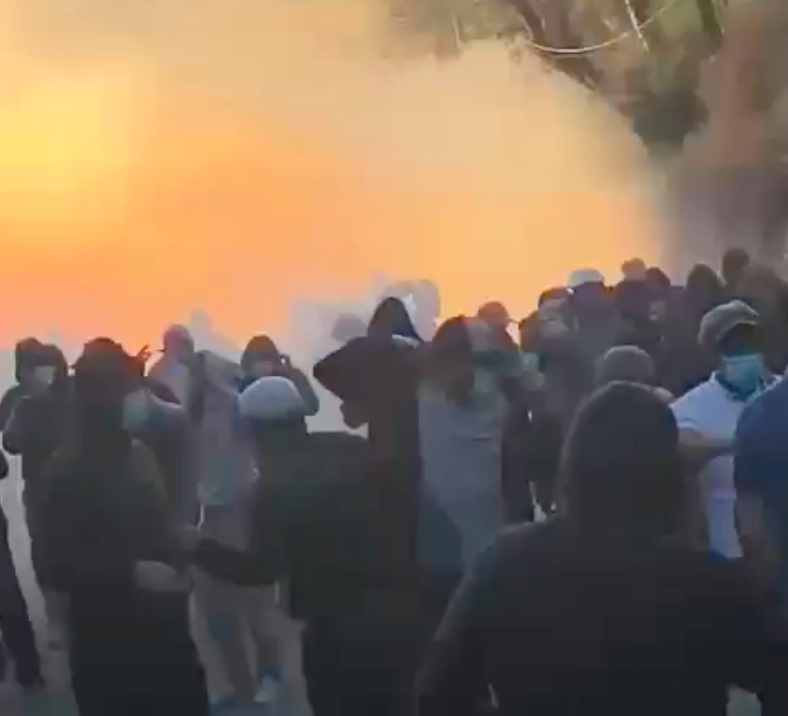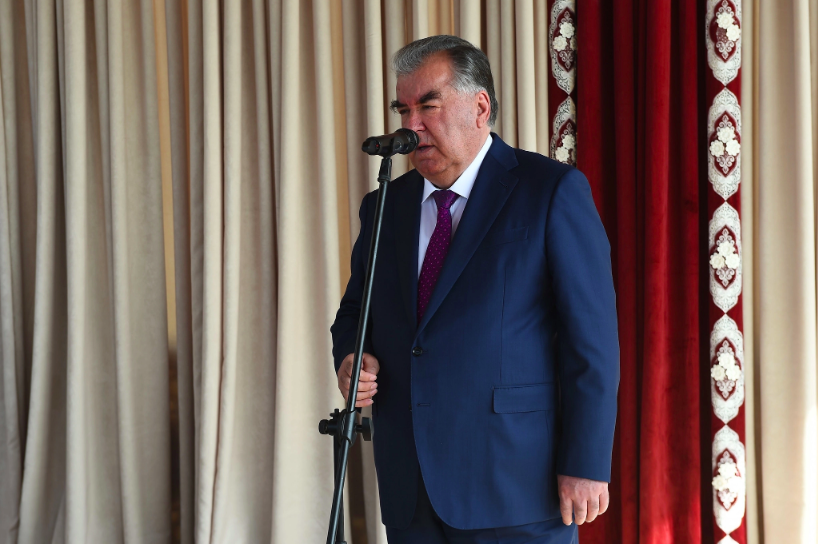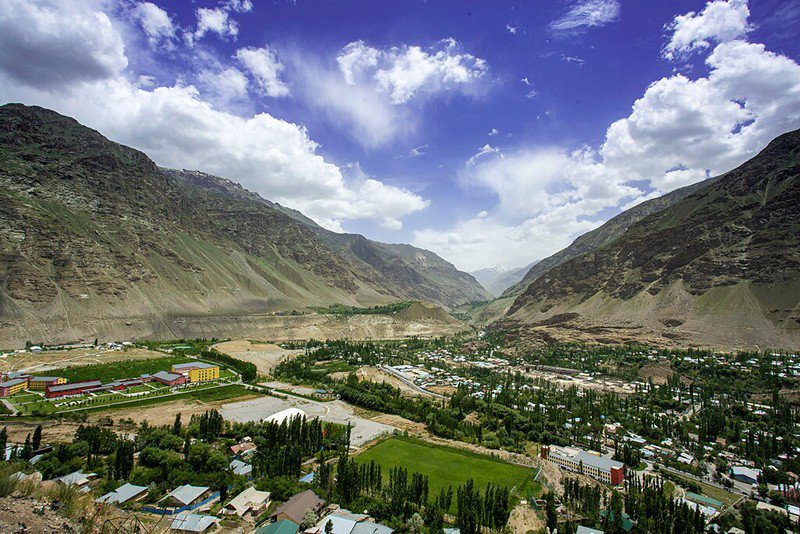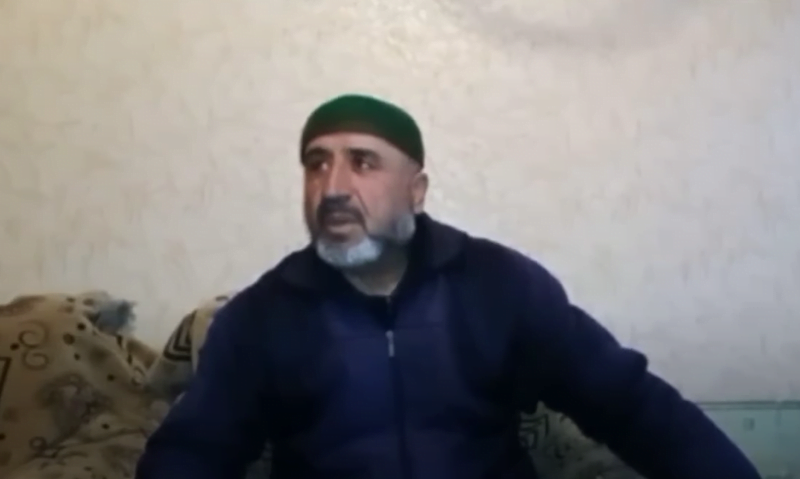Dushanbe (12/10 – 33.33) In mid-May, the Tajik authorities escalated their offensive against the people of Gorno-Badakhshan, a province encompassing the eastern half of the country.
By the time they finished, the relationship between this rugged mountainous region on the border with Afghanistan and the Tajikistan government in the capital, Dushanbe, seemed to have fractured beyond repair.
The offensive started with the murder of a man I knew well, Mamadboqir Mamadboqirov, known locally as Colonel Boqir.
The colonel had been an influential voice inside Gorno-Badakhshan since the civil war that had rocked the country between 1992 and 1997. Originally a military commander for the Tajik Pamiris during and after the war, Boqir was assigned to the country’s border security force, as part of the power-sharing agreement between the different sub-ethnic groups who had fought each other just years before.
The postwar reconciliation agreement continued the autonomous status of Gorno-Badakhshan Autonomous Oblast within Tajikistan – a status that existed even before the formation of the Tajik Soviet Socialist Republic in 1929.
Before the killing of Colonel Boqir and the mass arrests that followed, Khorog, the capital of GBAO, had one of the most vibrant and independent civil societies in Central Asia. Now that is being systematically stripped away.
Mountain home
GBAO is also bordered by China and Kyrgyzstan, and is not far from Pakistan. Although the province covers almost half the territory of Tajikistan, its population of around 250,000 is just a fraction of the country’s total of more than nine million. Most of the territory consists of east–west mountain ranges; only 3% of it is arable land. Residents are largely Pamiris and followers of the Ismaili branch of Shi’a Islam – whereas the rest of the country’s population are mainly Tajiks, Uzbeks, and Kyrgyz who are all Hanafi Sunni Muslims.
During Tajikistan’s civil war in the 1990s, GBAO was cut off from the rest of the country and these borderlands were a key transit point for Tajik refugees escaping ethnic-based violence, as well as for supplies and humanitarian assistance. Today, the districts that border Afghanistan are home to a multimillion-dollar drug trade and trafficking route – and a linchpin for the local economy.
I first met Colonel Boqir in 2010. I’d come to Gorno-Badakhshan to research informal (non-state sanctioned) organisations there – and also across the border in Afghanistan, where the similarly named Badakhshan province runs along GBAO’s southern edge.
We discussed issues endemic to the region, such as drug addiction and unemployment, as well as his efforts to develop youth programmes and his role as leader in the community. Later, I earned Boqir’s respect and, crucially, his protection – what is termed a krisha (roof) in Russian.

Fighting for control
Since the end of Tajikistan’s civil war, president Imomali Rahmon and his extended family have worked to consolidate their political and economic power in the country. At the same time, they have sought to sideline, arrest, or kill all competition, including independent leaders across Tajikistan. They have succeeded in every province except for GBAO.
These attempts to take full political and economic control of GBAO were still ongoing in 2012, when several thousand Tajik government troops descended on the regional capital, Khorog – ostensibly as part of a major military action to rid the area of criminal gangs.
One of the most powerful local leaders, Imum Imumnazarov, was killed. The government troops also attempted to assassinate Colonel Boqir, but failed. At the time, Boqir was one of the last independent leaders in the autonomous region and beloved leader of his mahalla (local neighbourhood), Bar Khorog. He was also considered to be a leading opposition figure by the government of Tajikistan.
his offensive soon became part of a pattern, with further military incursions by central authorities in 2014, 2018, 2021 and, finally, in 2022.
The aim was clear: gaining control of GBAO would give the Tajik administration full control of the illicit trade along the country’s section of the Pamir Highway, a 1,200km road that runs through Afghanistan, Uzbekistan, Tajikistan and Kyrgyzstan.
It would also give the government control of the local economy (partially under local control due to the province’s autonomous status) and a direct trade route to China and the “drug capital” of Osh in Kyrgyzstan.
Local leaders
I met Colonel Boqir several times during the last decade, as well as most of the local leaders in Khorog overseeing religion, women’s issues, youth, mahallas, business and education. I also met the heads of NGOs and the Aga Khan Development Network (AKDN – named after Aga Khan, the spiritual leader of Ismaili Muslims).
AKDN’s network of humanitarian and development organisations is active in Ismaili-dominated areas throughout the world. It’s a key economic driver in the region and, due to neglect by the central government, many GBAO residents receive social welfare support and even employment from ADKN institutions.
In recent months, the government of Tajikistan has systematically killed, arrested or destroyed local leaders in GBAO, under the guise of “anti-terrorist” operations. The most recent round of violence has its roots in November 2021, when peaceful protests sprang up over the military’s killing of Gulbuddin Ziyobekov, a youth leader and a Pamir.
That mobilisation was met swiftly with a violent crackdown. An agreement was struck between local leaders, but there was no further action on Ziyobekov’s death. Instead, the government issued arrest warrants for hundreds of citizens of Khorog.

In mid-May 2022, approximately 1,000 protesters again took to the streets of Khorog due to a lack of government response to Ziyobekov’s death. The security forces, using tear gas and live ammunition, dispersed protesters who had gathered in the Bar Khorog mahalla. Snipers shot at protesters from the hills in several mahallas, including Bar Khorog, UPD and Gulaken. A video of armoured vehicles driving through central Khorog circulated on social media.
As tensions increased, the Tajik government sent in reinforcements. On-site reports showed that protesters set up a roadblock in Vamar (around 60km north-west of Khorog) in the district of Rushan, to halt the progress of a military convoy.
The Tajik government convoy began shooting at the protesters. According to the Tajik government, eight people were killed. Local sources reported that 40 Rushan locals were killed and around 120 were taken “hostage” by the security forces. Several of those detained were allegedly tortured and killed on 18 and 19 May.
Numerous reports of tortured bodies emerged, as well as a video of three Rushanis being interviewed by Taliban security forces after being detained by the Taliban having crossed the border into Afghanistan. The three Rushanis explained in detail the violence and killing of unarmed civilians in Rushan during the attack on 18 May. They also described the terror and violence perpetrated against them by the Tajik security forces, including looting, house-to-house searches, and threats of further torture, detention and violence if anyone spoke of the events.

The Tajik security services published an open letter to Colonel Boqir online, saying that if he did not open the road through Bar Khorog (a road nicknamed the “Heroin Highway”), they would kill a hostage a day until he complied. As one source put it: hostages would be killed if Boqir “did not order his supporters to reopen the vital road that connects Dushanbe with China and via which trucks belonging to one of the president’s daughters transport goods”.
According to local sources, the security forces killed two hostages and also sent gruesome evidence of what they’d done to Boqir. Several people close to the late colonel said he felt personally responsible for the killings, and was worried they would continue.
At the same time as the violence in Rushan, the Aga Khan wrote a letter encouraging Ismailis in GBAO “to live within the laws of the land”, to avoid violence and “resolve differences with wisdom through peaceful dialogue in the spirit of mutual respect and understanding”.
As one local source explained to me, Boqir “stopped resisting” when AKDN officials handed him and his supporters the letter, even though the latter had been “ready to fight till the end”.
On 22 May, after receiving the letter and the gruesome message from Rushan, it was reported that Boqir went for a walk. He must have known that it would end in catastrophe. There were surveillance drones in the area, troops stationed around Bar Khorog, and only a day earlier snipers had allegedly fired on Boqir’s home four times. There were also reports that surveillance drones and snipers had been in place around Bar Khorog since January, long before the May protests.
Several local sources reported that Boqir left Bar Khorog on the afternoon of 22 May. He approached the bridge over the Ghund River to the neighbouring mahalla, Boine. The latter was controlled by Tajikistan’s elite Alpha security forces, who had deployed drones and snipers in the surrounding hills. According to a resident of Bar Khorog, Boqir was shot by security officers in a pick-up truck that approached the bridge after getting information about his movements. They shot him first in the arm and then in the head. One young man was killed and another injured when they ran in to try to protect him.
Local sources described the security forces hooting and hollering in glee, celebrating and dancing in the streets after Boqir was killed.
End of an era
The murder of Colonel Boqir – a goal of the Tajik government for over a decade – signalled the end of an era of independent and autonomous leadership in GBAO. Sadly, this spells the end for one of the most active civil societies in Central Asia.
Boqir’s death was the start of a massive crackdown in Khorog, and a slew of arrests, torture and confiscation of property by the government of Tajikistan. People were coerced into signing humiliating and self-incriminating statements. Between the end of November 2021 to July 2022, it has been reported as well as corroborated with local sources that arrest warrants for more than 700 Pamiris have been issued. Hundreds have been arrested and at least 40 civilians killed.
After spending almost seven years living on and off in the region and writing about it, I gained a deep respect for the vibrancy and inclusiveness of the system of local governance. But this entire network of leaders and local organisations in Khorog is now being systematically destroyed.

Many Pamiris believe this marks the end of their autonomy and religious freedom, and fear that they will be living under a securitised surveillance state. Many are trying to leave, for fear of being arrested, tortured or killed. The government also removed a giant Ismaili flag from the side of a hill near Khorog. This, one local explained to me, is seen as “both the long-awaited victory of the regime over this region and the beginning of the crackdown on religious freedom”.
But these events have also served to rally both Pamiris and non-Pamiri groups within the country and abroad. Many in the region who supported Boqir now view him as a Pamiri hero. Local sources told me that thousands of people showed up at his funeral even though roadblocks were in place. Hundreds of Pamiri youth, both male and female, now use Boqir’s photo as their Facebook avatar.
The Pamiri diaspora is also key to the region’s future. Leaders within the diaspora are organised, educated and dedicated, and have been mobilised and politicised by the recent crackdown. Some members of the diaspora are very committed to stopping human rights abuses; others are increasingly questioning the way Tajikistan is governed. As one member of the Pamiri diaspora suggested, the crackdown has meant that “the focus of Pamiri civil society has switched to diaspora communities”.
The recent violence in Khorog and Rushan must also be viewed in a broader regional context, particularly given the trade – legal and illegal – along the Pamir Highway, the main route between Tajikistan and China.
Afghanistan produces some 80% of the world’s heroin, and has a thriving production and trade in meth amphetamines. Roughly 20% of both substances are trafficked across the Tajik border. Given that the border between Kyrgyzstan and Tajikistan is closed at Batken due to ongoing tensions, only the Osh route along the Pamir Highway is available for trade in and out of Tajikistan.

Economic interests, combined with the potential for political instability and other perceived threats (often inflated by the Russian and Tajik governments) from the Taliban, ISIS or local terrorist groups, ensure that powerful neighbours are watching these developments closely.
It is in the interest of Russia to have access and some control along the border of Tajikistan as part of their broader anti-terrorist operations and anti-Western strategy. It is in the interest of China to have full access to the Pamir Highway and the route through GBAO.
These factors, along with the absence of Western powers in the region since their withdrawal from Afghanistan, have emboldened the Tajik government to follow through on its long-held goal of stripping GBAO of its local informal leadership, civil society organisations, religious and economic freedom, and ultimately, its century-long autonomous status.
Notably, immediately after the arrests and killings of the most powerful local leaders in May and June, the Tajik government announced a $200m infrastructure bill funded by China to overhaul the Pamir Highway. The government also announced that it had nationalised the businesses of arrested business owners and would renovate numerous apartment buildings. Evictions and property seizures began immediately after the arrests.
In the final analysis, the Pamiris are a microcosm of the larger issues facing Central Asia and Afghanistan today. With routes from China, Afghanistan, Kyrgyzstan and Pakistan, the borderlands in GBAO sit at the centre of regional trade routes and access points, while authoritarian dictators rule every state in the region and outside powers vie for control over the resources and trade in the region.
Against this backdrop, the Tajik Pamiris in GBAO struggle to maintain their own identity and autonomy, yet their efforts have so far resulted in dozens of lost lives, the imprisonment of hundreds of respected members of civil society, torture and seizures of property. In the face of such repression, the words of Boqir in February during a video of him speaking to residents of Khorog, may be the last bulwark against annihilation: “We won’t give up our dignity or our autonomy.”
Reported by Suzanne Levi-Sanchez












